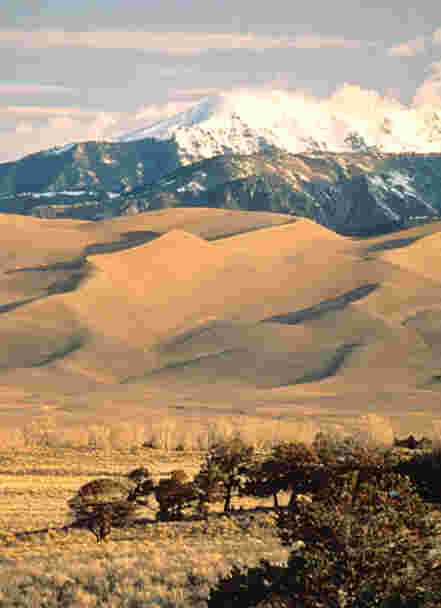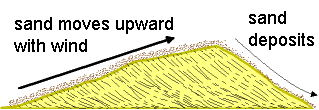|
It was hard for geologists to determine that the Navajo cross bedding
were once sand dunes, because cross bedding is created in many different
ways. Cross-beds of many different shapes and sizes are also made in
water environments, such as beaches, rivers, and the deep-sea.
Geologists have used the study of sedimentary environments to
understand the Navajo Sandstone. They have discovered that the cross
bedding in the Navajo almost exactly resemble the cross bedding that
form in sand dunes. Sand dunes are mounds of sand moved by the
wind. They commonly form in dry Earth surface environments.
From observing active sand dunes, we know how they form cross
bedding. Viewed from one end, sand dunes have a flat back side and a
steep front side. The wind blows up the back side of the dune. If the
wind moves fast enough, it will pick up and transport sand grains up the
back of the dune. When the wind goes over the top of the dune, it slows
down. This causes it to drop the sand grains it was carrying. The
cross-bed gets flatter at the bottom because some of the sand rolls down
to the bottom of the dune and piles up.
|

Sand dunes in Colorado

The formation of a sand dune and a cross
bedding structures
|